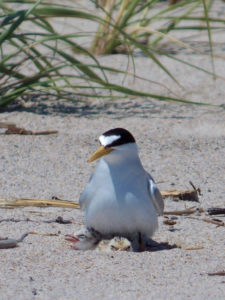We have much more to do and your continued support is needed now more than ever.
Stop this Threat to the Mississippi River
This Week in NWF History

Since 1936, the National Wildlife Federation has worked to conserve the nation’s wildlife and wild places. As part of our 80th anniversary celebration, we are recognizing important moments in our history that continue to make an impact today.
 Stopping this project has been a priority for the National Wildlife Federation for more than a decade. In August 2002, we submitted detailed comments opposing this project, as did other partners in the conservation community. When the Corps insisted on moving ahead with the project, NWF and others joined together and sued to stop the project in 2004. In the September 2007 decision of this case, the Court issued an injunction enjoining the Corps from proceeding with the project, threw out the environmental impact statements on which the Corps had relied, and ordered the Corps “to deconstruct that portion of the project which it has already built.”
Stopping this project has been a priority for the National Wildlife Federation for more than a decade. In August 2002, we submitted detailed comments opposing this project, as did other partners in the conservation community. When the Corps insisted on moving ahead with the project, NWF and others joined together and sued to stop the project in 2004. In the September 2007 decision of this case, the Court issued an injunction enjoining the Corps from proceeding with the project, threw out the environmental impact statements on which the Corps had relied, and ordered the Corps “to deconstruct that portion of the project which it has already built.”
The Fight Continues

Unfortunately, this major legal victory did not stop the Army Corps, which is once again poised to approve construction of the project. As the last place where the Mississippi River connects to its backwater floodplain in the state of Missouri, the New Madrid Floodway provides important habitat for wildlife such as the endangered least terns, migrating waterfowl and shorebirds, mammals, reptiles, amphibians and 114 different species of fish. The river-floodplain connection naturally regulates the flow of water, nutrients, and energy that keeps the area ecologically healthy and provides vitally important habitat. The New Madrid Levee would sever this connection with devastating impacts.
The New Madrid Floodway also provides critical flood protection for people living nearby. During extreme floods, water is diverted into the Floodway’s 130,000 acres, protecting dozens of river communities in Illinois, Missouri, and Kentucky. Without this protection, people will lose their homes and suffer other damages from the flooding impacts caused by the levee. The devastating floods of 2011 showed that even small delays in using the Floodway can be the difference between homes flooding or staying dry. By promoting more intensive use of the Floodway, the project will make it even harder to use the Floodway to protect communities during the next big flood.

To stop this disastrous project, the National Wildlife Federation has mobilized a strong and broad-based coalition of local leaders, conservation organizations, and community members to help convince the Environmental Protection Agency to put a stop to this project once and for all. Under the Clean Water Act, the Environmental Protection Agency has the authority to veto the project, and they must be encouraged to do so. Join us in this fight today!






















